« Vamps. Creating energy with Diatonic triads. |
Main
| Vamps. Scurry Dominants »
 August 30, 2012 | Vamps. Expanding the Diatonic triads August 30, 2012 | Vamps. Expanding the Diatonic triads
Last week we introduced the first in our series on Vamp, taking static chords that might be "vanilla" all by themselves, stumming "G. G. G. G. G. G, etc." and supercharging the pattern with chords out of the same scale. The idea is to add the condiments that don't betray the tonal center, the "G-ness" of the measures, but freshen the accompaniment. We did it with simple three-note chords, major triads, including three different variations commonly called "inversions." If you haven't read this already, we encourage you to double back and soak it in: Vamps. Creating energy with Diatonic triads.
We briefly mentioned the notion of transposing these basic patterns to other keys, and this is important enough to emphasize and belabor further. These three simple inversions become your oyster if you can internalize the pattern and start moving them up and down the fretboard, even across the strings. (With 3-note chords, you can do that!)
This was where we left off, moving the 2nd inversion D into a more comfortable fret region. Don't worry about the inversion label; just learn the relationships:
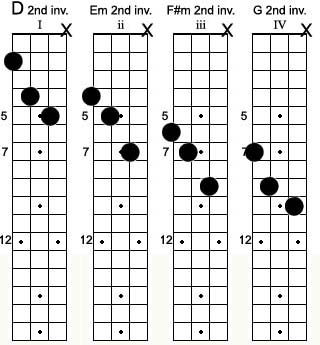
Remember to play around with it some. Strum the chords a couple times with some variation:
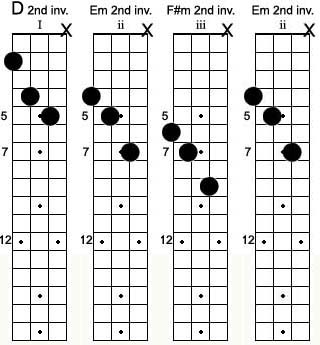
Feel free to mix it up:
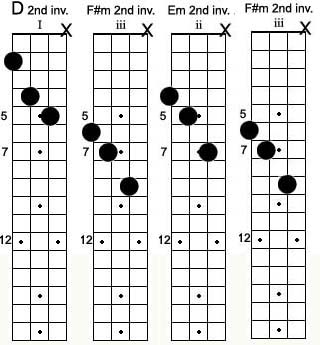
Using the same set of inversions in the same key, we want to add a little magic, with these chord that are only a 1/2 step, one fret away:
 . . 
Add the Fminor chord into the pattern. Mechanically, it's an extremely easy thing to do, but it has a mature aesthetic effect:
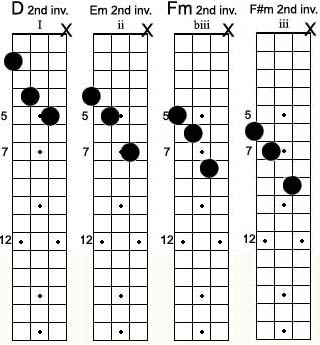
And the the C# major chord, play the following pattern several times. Note that with this chord played on the offbeat, it doesn't throw the tonal center off, rather adds a nice little spice to the progression:
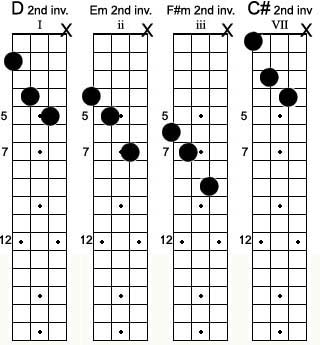
You can do the same with the next inversion, adding the same slick ascending one-fret trick.
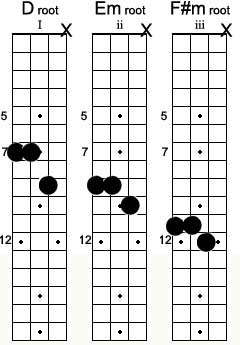
Insert these two chords at will. Like the cooks say, season to taste
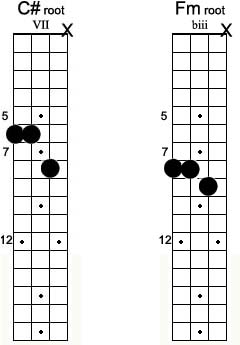
Again, simple in mechanics, with the insertion of these into the pattern, you're adding additional energy without harmonic distraction.
Play around with these and see if you can do the same with the third (1st inversion) set of blocks from last week.
Further
Vamps. Creating energy with Diatonic triads
Fitting in with triads
5-string chording. A different way of thinking...
Static Changes: V7 chords
More Three-note chords to supercharge your comping
Posted by Ted at August 30, 2012 10:11 AM

Disclaimer: In the 'Information Age' of the 21st Century,
any fool with a computer, a modem, and an idea can
become a self-professed 'expert." This site does not
come equipped with 'discernment.'
|



